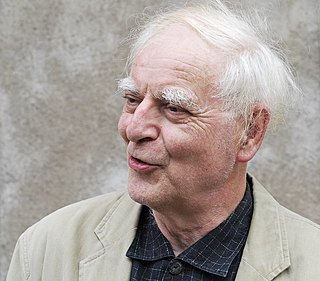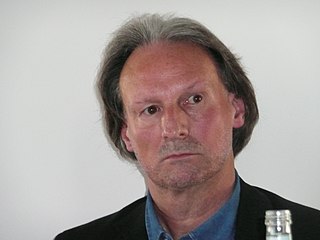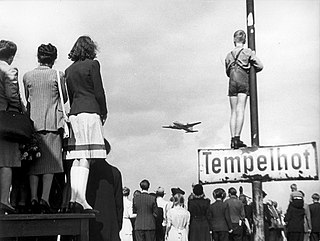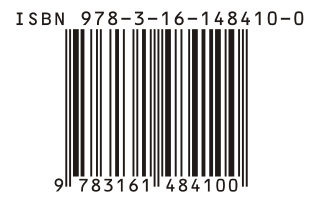This article gives an overview of liberalism and radicalism in Switzerland. It is limited to liberal and radical parties with substantial support, mainly proved by having had a representation in parliament. The sign ⇒ means a reference to another party in that scheme. For inclusion in this scheme it isn't necessary that parties labeled themselves as a liberal party.

Hans Erni was a Swiss graphic designer, painter, illustrator, engraver and sculptor. Born in Lucerne, the third of eight siblings, to a cabin cruiser engineer, he studied art at the Académie Julian in Paris and later in Berlin, and admired artists such as Pablo Picasso and Georges Braque. He is known for having illustrated postage stamps, his lithographs for the Swiss Red Cross, his participation on the Olympic Committee as well as his activism. His 1939 works and first major public success was a mural titled Switzerland: "Vacation Land of the People" was commissioned and displayed for the national exhibition in Zürich. The Hans Erni Museum, situated in the grounds of the Swiss Museum of Transport in Lucerne, contains a large collection of artwork, he also designed ceramics and theatre costumes and sets. He did the art for Swiss bank notes, in the 1940s but, after the notes were already printed they were never published, because a member of the State Council of Lucerne criticized that Erni was deemed as a communist. However, Erni was never a member of any political party. In 2004, he was awarded the honorary citizenship of the city of Lucerne. On 10 January 2009 he received the SwissAward for lifetime accomplishment. In his career, he realized about 300 posters and several murals. He illustrated about 200 books and created 90 Postage stamps and 25 medals.

Max Bill was a Swiss architect, artist, painter, typeface designer, industrial designer and graphic designer.

Ernst Wiechert was a German teacher, poet and writer.

Adolf Muschg is a Swiss writer and professor of literature. Muschg was a member of the Gruppe Olten.

Hugo Loetscher was a Swiss writer and essayist.
Swiss Standard German, or Swiss High German, referred to by the Swiss as Schriftdeutsch, or Hochdeutsch, is the written form of one of four official languages in Switzerland, besides French, Italian and Romansh. It is a variety of Standard German, used in the German-speaking part of Switzerland. It is mainly written, and rather less often spoken.
Communist Party of Switzerland/Marxist–Leninists was a Maoist political party in Switzerland. It was founded in 1969 by now exiled intellectual Nils Andersson. Its forerunner, the Lenin Centre, had been founded in Lausanne in 1964.

Julius Hans Weigel was an Austrian Jewish writer and a theater critic. He lived in Vienna, except during the period between 1938 and 1945, when he lived in exile in Switzerland. He was a lifetime companion of the Austrian actress Elfriede Ott.

Jürg Amann was a Swiss author and dramatist. He has written radio plays, a biography of Robert Walser, and other works.

Kurt Aepli was a Swiss silversmith, a designer of fine jewelry and implements, as well as a professional educator.
Hanna Johansen, born Hanna Margarete Meyer, is a Swiss writer.
Patricia Jünger is a Swiss-Austrian multi-media artist, conductor, sound director and composer.
The German Orthographic Conference of 1901 took place in Berlin from 17th till 19 June 1901. The results of the conference became official in the German Empire in 1902. The standardized German spelling that resulted from the conference was largely based on the Prussian school spelling, but also on the Orthographic Conference of 1876.

Pedro Lenz is a Swiss writer.
Heinz Ludwig Arnold was a German literary journalist and publisher. He was also a leading advocate for contemporary literature.

Otto F. Walter was a Swiss publisher, author and novelist, which is well known in the German language countries. Otto Friedrich Walter was the younger brother of Silja Walter, a Benedictine nun in the Fahr Abbey and also a popular writer.
The Freethinkers Association of Switzerland (FAS) is a Swiss nonprofit organisation for freethought. It is the result of the merger of several late 19th century and early 20th century local freethinkers associations throughout Switzerland into a national society, currently headquartered in Bern.

Ursela Monn is a Swiss actress and singer.
Ernst Leumann was a Swiss jainologist, pioneer of the research of Jainism and Turkestan languages whose work is in consideration even today.














